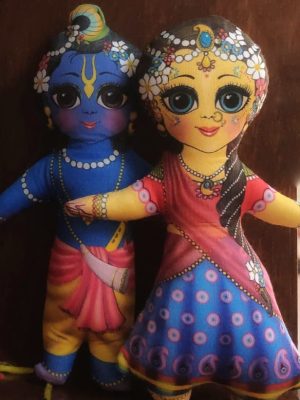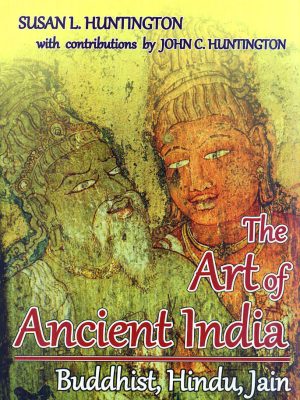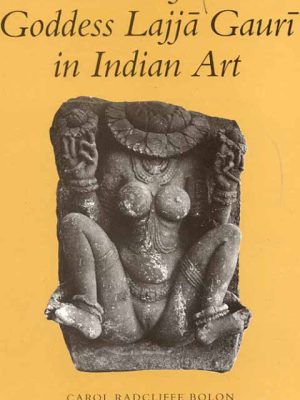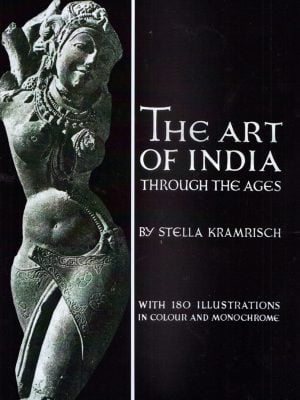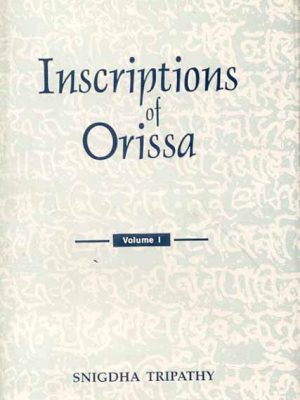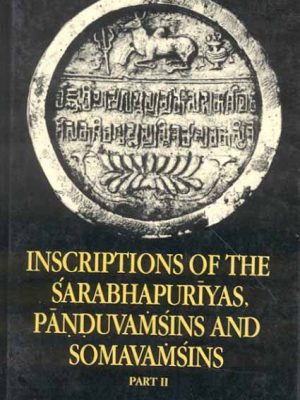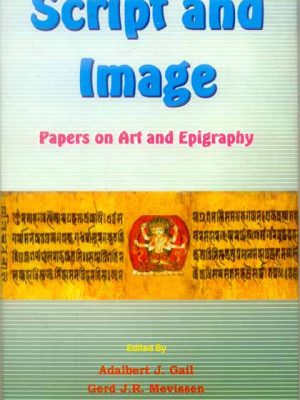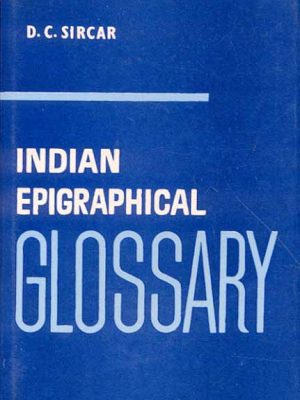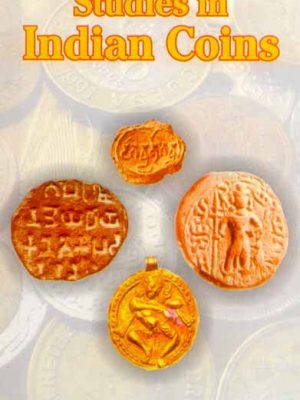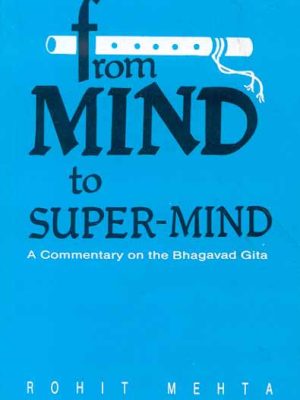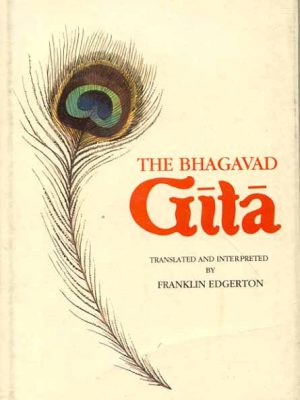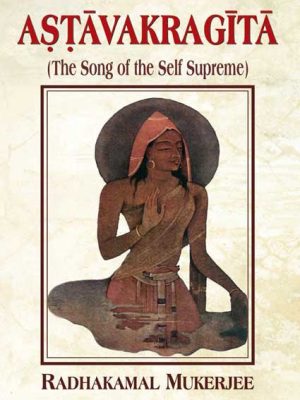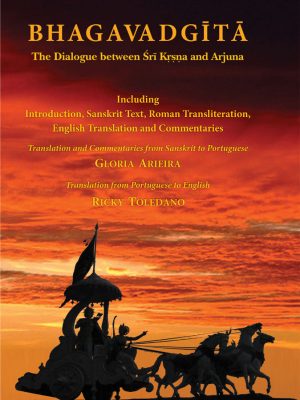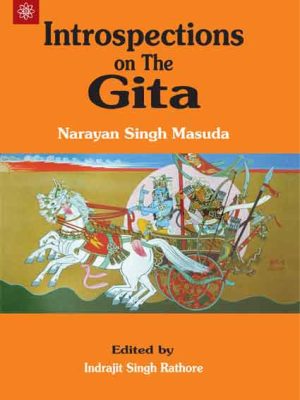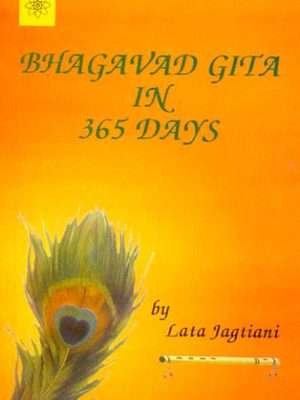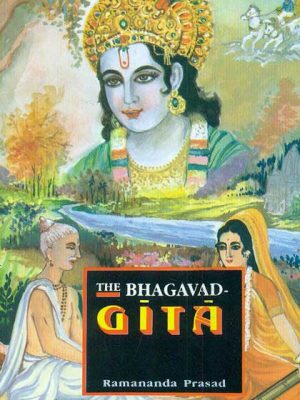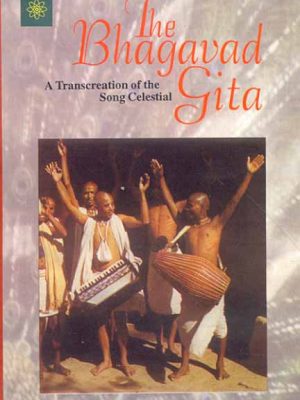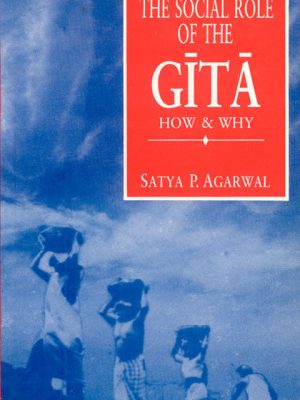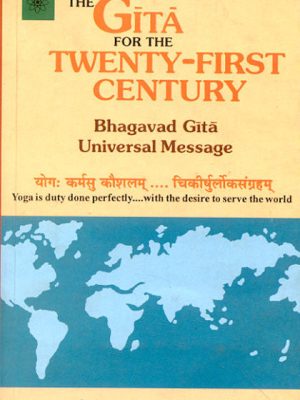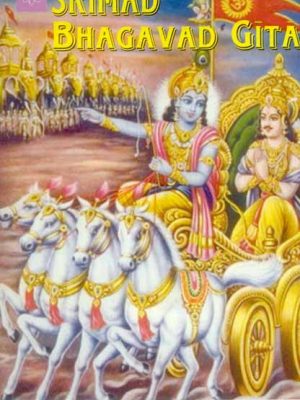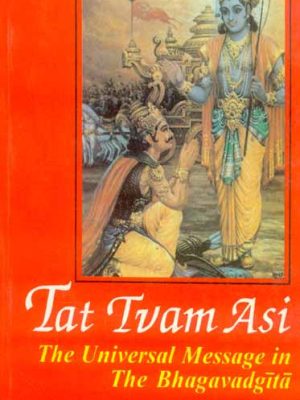Shop
Best Seller Items
-
2023 Hindu Deity Desk Calendar
“Raam Raam for every day of the year! Our 2023 calendar featuring Hindu deities is here to bring peace and blessings to your home. #Hinduism #calendar #2023”
[ABOUT THE THEME ]: 2023 Desk Calendar with Sketches of Hindu Deity for each month. All the artwork is created using Raam Naam Writing. Would look up great on your desk. And a gift that can be given.
[MATERIAL]: 12 months desk calendar format (Jan 2023 – Dec 2023) | Metal Wiro
[PAPER QUALITY]: 350 GSM laminated paper with matte finish & 8.5” x 5.5″ (artwork size) | Imported paper provides a shiny lustrous surface and protects from moisture and water splashes
[ABOUT THE CALENDAR]: Calendar designed to brighten your workspace, with 12 months of illustrated artwork. A self-inspiring themed calendar, infused with botanical illustrations, is a great addition to your desk. A perfect companion for your 2023. The pages are wire-bound in a glistening golden color and a stand makes it easy to prop up at work or at home. 12 months desk calendar format
[WHY BUY OUR CALENDAR]: Powerful illustrations to help you stay positive and motivated | Sleek and compact calendar to add pop of color to your desk | Unique and original illustration
[GREAT CHOICE FOR GIFTING]: Our calendars are unique, thoughtful, original, cute, and pretty. Makes an ideal choice for gifting.
₹299.00₹350.002023 Hindu Deity Desk Calendar
₹299.00₹350.00 -
2022 Dharmic Desk Calendar with Sanskrit quotes
[ABOUT THE THEME ]: 2022 Desk Calendar with unique Sanskrit quotes with meaning for each month. With some beautiful some rare some known temple images in the background. Would look up great on your desk. And a gift that can be given.
[MATERIAL]: 12 months desk calendar format (Jan 2022 – Dec 2022) | Metal Wiro
[PAPER QUALITY]: 350 GSM laminated paper with matte finish & 6” x 7.5″ (artwork size) | Imported paper providing a shiny lustrous surface and protects from moisture and water splashes
[ABOUT THE CALENDAR]: Calendar designed to brighten your workspace, with 12 months of illustrated artworks. A self-inspiring themed calendar, infused with botanical illustrations, is a great addition to your desk. A perfect companion for your 2022. The pages are wiro-bound in a glistening golden color and a stand makes it easy to prop up at work or at home. 12 months desk calendar format
[WHY BUY OUR CALENDAR]: Powerful illustrations to help you stay positive and motivated | Sleek and compact calendar to add pop of color to your desk | Unique and original illustration
[GREAT CHOICE FOR GIFTING]: Our calendars are unique, thoughtful, original, cute and pretty. Makes an ideal choice for gifting.₹220.00₹350.002022 Dharmic Desk Calendar with Sanskrit quotes
₹220.00₹350.00 -
Jeerola Pachak Masala Pouch Pack of 4: JalJeera Powder
This can be used with various Foods & Drinks listed below. Soda, Limbu Sarbat, Butter Milk, Curd, Water Melon, Cold Tomato, Green Salad, Fruit Dish, Veg. Sandwich, Wafers, Namkin, All type of Juice and etc…
Jeerola JalJeera Powder
This JalJeera Powder is All in one Masala is one of the best masala products in Gujarat. One Packet comes in the size of 100 Grams and can be stored easily throughout the year in all kinds of weather.
Did You know?
JalJeera Powder from Jeerola Masala is an iconic product of Upleta town in Rajkot District of Gujarat. It is produced by VK Foods and is also famous for making different sharbat and another drinking masalaInsider Story:
V.K. Foods is committed to the fulfillment of our Vision through a powerful focus on Customers, People, and Innovation. VK FOOD will create unique, superior, and economically competitive products through world-class integration of masala/spices expertise, consumer insights, and brand understanding.How to use
Add a teaspoon of the amount in Soda, Limbu Sarbat, Butter Milk, Curd, Water Melon, Cold Tomato, Green Salad, Fruit Dish, Veg. Sandwich, Wafers, Namkin, All types of Juice, and any of your favorite drinks.
₹229.00₹250.00Jeerola Pachak Masala Pouch Pack of 4: JalJeera Powder
₹229.00₹250.00 -
Faba Honey 100% Organic Honey with Discount: Fresh Mixed Flora Honey
Available in 7 different flavors
What is the healthiest type of honey? What is the difference between raw honey and regular honey?
Is Organic Honey worth it?
Sweeten your favorite beverage, smoothie, breakfast cereal and dahi with honey. Use it in cooking sauces, grill marinades, salad dressings and dips. A teaspoon of honey mixed with fresh tulsi leaf and ginger juice is a soothing remedy for sore throats. Crystallisation in honey is a natural phenomenon dependant on the balance of natural sugars in it. Honey can be decrystallised by placing the jar in a bowl of warm water-do not heat the honey.
You can checkout Jamun Honey here: https://indicbrands.com/product/faba-honey-100-organic-honey-jamun-honey/
Follow us for more updates on https://twitter.com/indicbrands
Manufactured & Packaged By Faba Honey, Sona Enterprise Rampur Civil Lines Area, Rampu.
₹325.00 – ₹620.00Faba Honey 100% Organic Honey with Discount: Fresh Mixed Flora Honey
₹325.00 – ₹620.00 -
Tringrahi Soft Toys Individual Pairs Radha Krishna Dolls Sita Ram Dolls Shiva Parvati dolls
A beautiful pair of Radha Krishna Dolls, Sita Ram dolls, Shiva Parvati Dolls, Gaur Nitai Dolls, Krishna Balraam Dolls, Shiv Nandi Dolls and Narsimha Prahlad dolls ( also known as rag dolls ) made in high-quality material. Its a must for every child. Introduce your child to the beautiful world of Ancient and Spiritual India through our dolls. Tell your kids stories of Radha Krishna and let them enact it through their pair of dolls. It’s washable and non-toxic.
These are made by the vrajavasi’s of Sri Dham Vrindavana and we promote Cruelty-free and Fair Trade policy.
This product comes in total 6 different types of Pair, please select your pair before checkout 🙂
Did you know:
Handmade dolls in the Indian traditional way are one of the most important toys for the children of India. The proof of using such dolls in ancient time as toys date back to the Harappa site.Inside Story:
These dolls are suitable for Golu Dolls. These are made by the Vrajavasi’s of Sri Dham Vrindavana and we promote Cruelty-free and Fair Trade policy.Read more about our the creator’s journey: How Indian Dolls are loved by children around the world
Follow us on Twitter : Indic Brands on Twitter
₹499.00₹555.00 -
Latest Cute Bal hanuman Doll Toys by Tringrahi
New Addition of Cute Bal Hanuman dolls
A beautiful and cute Bal Hanuman dolls ( also known as rag dolls ) made in high-quality material. It’s a must for every child. Introduce your child to the beautiful world of Ancient and Spiritual India through our dolls.
Tell your kids stories of Hindu Gods like Hanuman and let them enact it through their pair of dolls. It’s washable and non-toxic.
These are made by the Vrajavasi’s of Sri Dham Vrindavana and we promote Cruelty-free and Fair Trade policy.
Checkout more dolls set by Tringrahi at this link
Follow Indic Brands and Tringrahi on Twitter.
₹340.00₹400.00Latest Cute Bal hanuman Doll Toys by Tringrahi
₹340.00₹400.00
-
The Art of Ancient India: Buddhist, Hindu, Jain
The Art of Ancient India: Buddhist, Hindu, Jain
To scholars in the field, the need for an up-to-date overview of the art of South Asia has been apparent for decades. Although many regional and dynastic genres of Indic art are fairly well understood, the broad, overall representation of Indiaês centuries of splendor has been lacking. The Art of Ancient India is the result of the authorês aim to provide such a synthesis. Noted expert Sherman E. Lee has commented: –Not since Coomaraswamyês History of Indian and Indonesian Art (1927) has there been a survey of such completeness.” Indeed, this work restudies and reevaluates every frontier of ancient Indic art _ from its prehistoric roots up to the period of Muslim rule, from the Himalayan north to the tropical south, and from the earliest extant writing through the most modern scholarship on the subject.
This dynamic survey-generously complemented with 775 illustrations, including 48 in full color and numerous architectural ground plans, and detailed maps and fine drawings, and further enhanced by its guide to Sanskrit, copious notes, extensive bibliography, and glossary of South Asian art terms-is the most comprehensive and most fully illustrated study of South Asian art available.
The works and monuments included in this volume have been selected not only for their artistic merit but also in order to both provide general coverage and include transitional works that furnish the key to an all encompassing view of the art.
An outstanding portrayal of ancient Indiaês highest intellectual and technical achievements, this volume is written for many audiences: scholars, for whom it provides an up-to-date background against which to examine their own areas of study; teachers and students of college level, for whom it supplies a complete summary of and a resource for their own deeper investigations into Indic art; and curious readers, for whom it gives a broad-based introduction to this fascinating area of world art.
₹4,500.00 -
Forms of the Goddess Lajja Gauri in Indian Art
Forms of the Goddess Lajja Gauri in Indian Art
To convey her majesty, the painters who created Lajja Gauri’s portraits drew on a plethora of traditional symbols of prosperity, fertility, and life-force. Due to the lack of supporting texts, the research begins with the items themselves and works backwards to establish their meaning. To better understand Lajja Gauri’s rich symbolic meaning and cultural background, Carol Bolon traces the evolution of the goddess’s shape over the course of four centuries, including its likely acceptance from tribal worship into Hindu temples
₹995.00 -
The Art of India Through the Ages: Traditions of Indian Sculpture Painting and Architecture: With 180 Illustrations in Colour and Monochrome
The Art of India Through the Ages: Traditions of Indian Sculpture Painting and Architecture: With 180 Illustrations in Colour and Monochrome
The visual arts of India have been underappreciated for centuries, despite the fact that Europeans were the first to discover and study their poetry and philosophy in India over a century ago. While ‘Sakuntala’ and ‘The Sermons of Buddha’ were regarded as literary masterpieces on par with those of Sophocles and Plato, the Indian arts were viewed as a visual supplement to the study of religion or anthropology in a faraway land, one that was enigmatic, sensual, and exotic.
The finding that Indian art has a suitable position in the history of art had still to be made. This book is the first of its kind in the field, therefore there is no need to worry about hyperbole.
As a result of researchers’ inability to demonstrate that Indian sculpture and building had the same artistic worth as Greek sculpture and mediaeval churches, this is what has occurred
The book’s 180 images serve as a visual tour of Hindu and Buddhist art in India.
Many of these pictures, many of which have never been seen before, were taken over the course of extended travels and years of intensive investigation This collection includes intricate temple structures, gracefully swaying bronze statues, magnificent rock-hewn representations of gods and monsters, murals, artistic reliefs, massive statues and busts, etc. It is likely that students will find the comprehensive images of buildings and sculptures (some of which were taken in extremely challenging conditions) as well as the eight colour reproductions of paintings, which augment the monochrome, photogravures, particularly valuable.₹2,500.00 -
Inscriptions of Orissa (Vol. 1): (Vol.I: Circa Fifth-Eight Centuries A.D.)
Inscriptions of Orissa (Vol. 1): (Vol.I: Circa Fifth-Eight Centuries A.D.)
The present volume inscriptions of orissa, the result of the intellectual labour, covers a subject
of immense value for those interested in the reconstruction of ancient and
mediaeval history and culture of Orissa, the major part of which is still
in darkness. Based on the original documents in the form of copper plate
and stone records, discovered from different parts of Orissa, it presents
almost a complete picture of the history and culture of the period (C.A.D.
5th-8th century A.D.) in Orissa as part of the wider scene that obtained in
the Indian sub-continent.
The volume deals with as many as sixty valuable epigraphic records that
fall within the period set for the book which have been divided into five
sections along with an extensive introductory analysis of the texts studied
from various aspects. It presents a chronologically classified list of
inscriptions which are of undoubted historical importance. In its
originality of materials and the manner of presentation, the volume is sure
to remain a source book for the research scholars in this field of their
study.
₹795.00 -
Inscriptions of the Sarabhapuriyas, Panudvamsins and Somavamsins (2 Vols.)
Inscriptions of the Sarabhapuriyas, Panudvamsins and Somavamsins (2 Vols.)
This work is a product of the Inscriptions of India Programme of the Indian Council of Historical Research undertaken with a view to making inscriptions dating from circa sixth to fourteenth century a.d. available in handy volumes. Part I studies the inscriptions of the Sarabhapuriyas, Panduvamsins and Somavamsins who played a major role in shaping the destinies of the Chhattisgarh region of Madhya Pradesh (Kosala) and the adjoining region of Orissa from about the sixth to the early twelfth century a.d. It provides a background to the study of the inscriptions by attempting to deal with their formal aspects like the format, palaeography, language, orthography, contents and methods of dating and to trace, for the first time, the evolution of their draft. Dharmasastra injunctions regarding the preparation of deeds of land-grants and their actual epigraphic parallels have also been discussed at length. The work sheds welcome light on the chronology and history of the region during the period in question and offers several original suggestions basing on fresh discoveries and new interpretation of known records. With its many interesting features, the work will surely be found enlightening by students and researchers delving deep into early Indian history and epigraphy.
₹1,695.00 -
Script And Image: Papers on Art and Epigraphy
Script And Image: Papers on Art and Epigraphy
The articles collected in this volume, which were originally presented in the panels on art and epigraphy at the 12th World Sanskrit Conference in Helsinki, Finland, illustrate the depth, diversity and sophistication of recent studies in these subjects by scholars from several countries. The subjects treated include new archaeological and epigraphic dicoveries, the relation between textual and iconographic traditions in both Hindu and Buddhist contexts, the historical and Cultural analysis of inscriptions, and the application of computer technology to the study of Indian Paleography. The essays contained in this book cover a broad range of topics in terms of chronology, geography, and sectarian tradition.
₹725.00 -
Indian Epigraphical Glossary
Indian Epigraphical Glossary
The interested world of scholars is sure to receive with gratitude this
latest work from the erudite pen of Prof. D.C. Sircar who has opened up for
us new vistas in the study of Indian antiquities. Prof. Sircar’s Indian
Epigraphical Glossary, characterised by a wide sweep of vision based on a
meticulous attention to details, is a contribution of the utmost
importance. Here one finds an embarras de richesses in a comprehensive
dictionary of technical expressioins found in documents embracing nearly
2000 years in time and the entire Indian sub-continent in space and written
in a variety of languages. It offers a panorama of Indian political and
cultural life as enshrined in a series of expressions which are precise and
historically important. Many of them remained obscure, and Prof. Sircar,
with his thorough knowledge of the subject in the study of which he has
spent a life-time, has succeeded in most cases in giving quite satisfactory
interpretations. The mass of material in this invaluable publication, which
will continue to be an indispensable work of reference for many years to
come, brings in a volume of lexical material for the compilation of an
exhaustive Dictionary of Sanskrit. The importance of the work, which I
would consider epoch-making in the domain of Indology, has been
considerably enhanced by three remarkable Appendices.
₹1,495.00Indian Epigraphical Glossary
₹1,495.00 -
Studies in Indian Coins
Studies in Indian Coins
The present book is an authoritative and authentic source for the study of Indian coins. It not only describes the coins but also studies them critically in all their aspects. The points which are dealth with here are on numismatic studies in India; Satamana and Sana; Kautilya and Buddhaghosa on coins; silver coins of Vasisthiputra Satakarni; alleged coins of the Mahisa kings; coins of semi-independent rulers; date of Isvaradatta’s coins; Petluripalem hoard; some problems of tribal coins; coins of Kumaragupta I, Harigupta and Ramagupta; coins of Muhammad bin Sam and Prthviraja; coins of Kakatiya Prataparudra I; Gajapati Pagoda, Ganga Fanam and Ramatanka; coins of Bhairavasimha; Maratha mint under the Peshwas; Cowrie-shell, rupee and pice. In describing the features of a particular class of coins from the standpoint of standard, style and fabric or in discussing the significance of the numismatic terms, the author has utilized the literary data which have a bearing on them.
₹895.00Studies in Indian Coins
₹895.00 -
From Mind to Super Mind: A Commentary on Bhagavad Gita
The message of the Gita has an important and a practical bearing on the problems of the modern age. It shows a way out of the complexities of the mind to complete and unfettered freedom of the Super-Mind. This path is not meant only for the few, it can be trodden by all who seek freedom from life’s entanglements. In an age where the individual is becoming more and more insignificant due to the impacts of political, economic and social forces, the Gita brings to man a message of hope and cheer, for it shows a way of life which leads to the regaining of his lost significance, and the spiritual regeneration of man is indeed the way to the creation of a happy society.
About the Author:
ROHIT MEHTA was a founder of the Congress Socialist group in 1934. He travelled widely in almost all parts of the world as a lecturer speaking on Religion, Philosophy, Yoga, Psychology, Education, etc. Mehta was a founder of the congress socialist group in 1934 which later on became the socialsit party of India. But while he accepted the economics of socialist Party of India. But while he accepted the economics of socialism he was deeply dissatisfied with the philosophy of socialism. This led him to become an active worker in the Theosophical society. He became an International secretary of the society when Dr. G.S. Arundale was the president.
₹295.00 – ₹495.00From Mind to Super Mind: A Commentary on Bhagavad Gita
₹295.00 – ₹495.00 -
Bhagavad Gita (2 Vols. in One)
To most Visnuites, and to most Hindus, the Bhagavad Gita is what the New Testament is to Christians. It is their chief devotional book, and has been for centuries the principal source of religious inspiration for many millions of Indians. In this two-volume edition (bound in one), Volume I contains on facing pages a transliteration of the original Sanskrit and the author’s close translation. Volume II is Edgerton’s interpretation in which he makes clear the historical setting of the poem and analyzes its influence on later literature and its place in Indian philosophy.
₹495.00 – ₹995.00Bhagavad Gita (2 Vols. in One)
₹495.00 – ₹995.00 -
Astavakragita: The Song of the Self Supreme
Astavakragita (The Song of the Self Supreme) contains the Sanskrit text of Astavakragita (both in Nagari and Roman script), its English translation, Exegesis and Glossarial Index. It presents in twenty chapters the substance of Astavakra’s teaching in respect of the Cosmic Self in the form of his dialogue with Janaka, the seer-king of Videha. The teaching is based on the Upanisadic creed of Absolute monism (Advaitavada) that identifies the Self with the non-dual Ultimate Reality. But the contribution of Astavakra is also immense, for he has introduced the element of emotional experience or the mystical feeling as the means for realizing the non-dual nature of the Self. Written in a lucid style and dealing systematically with the subject matter, the book will hold a unique position among the contemplative classics of the world.
Review(s)
The English translation is faithful to the Sanskrit original and the annotations by the editor are extremely illuminating and helpful. Altogether, this book is a treasure house of Advaita thought and should be in the hands of every sincere student of phil
₹295.00 – ₹495.00Astavakragita: The Song of the Self Supreme
₹295.00 – ₹495.00 -
Bhagavad Gita: The Dialogue between Sri Krishna and Arjuna: Including Introduction, Sanskrit Text, Roman Transliteration, English Translation and Commentaries
Fraught with feelings of self-doubt and hopelessness, a great warrior collapses in self-defeat, posing questions for his charioteer, just before the immense battle begins on the plain of Kuruksetra. It is as if there was an interruption of the epic story of the Mahabharata, which pauses dramatically for the dialogue between the teacher, Sri Krishna, and his disciple, Arjuna, which is known as the Bhagavad Gita. This dialogue has been handed down as part of the oral Vedic tradition in an unbroken line of knowledge for more than 5000 years. And despite such antiquity, Arjuna’s questions remain just as relevant today, because the human sense of insufficiency and desire for fulfillment are timeless. Fortunately for Arjuna and all of us, the solution is also timeless. Sri Krishna teaches him the knowledge about the ultimate truth of the Self, the essential nature of the human being, covering the topics of dharma (appropriate action to fulfill what must be done) and yoga (to do so unmoved by the results of such action) while keeping a vision of Isvara (the Cause and the Order that is the Universe) to attain moksha, final liberation from the human sense of limitation. With an unwavering dedication to the original Sanskrit and the tradition of Advaita Vedanta, Gloria Arieira unfolds the beauty and clarity of the message that is the Bhagavad Gita the very knowledge of the Self that removed Arjuna’s confusion, allowing him to rise to his feet once again.
Review(s)
About the Author(s)
GLORIA ARIEIRA studied Vedanta, Sanskrit, Vedic chanting, and meditation in India between 1974 and 1978, under the guidance of Swami Dayananda Saraswati, at the Sandipani Sadhanalaya ashram in Mumbai, and in two other ashrams in Rishikesh and Uttarkashi. Her pilgrimage has led her throughout the years to several temples and holy sites around India, including Gomukh, Gangotri, Badrinath ãthe cavern where Vyasa wrote the Mahabharata ãand Jyoshimath, the center for study founded by none other than Sri Sankara himself. For more than 30 years, she has taught Vedanta and Sanskrit regularly at her center for Vedic studies, Vidya Mandir, in Rio de Janeiro, and other institutes throughout her native Brazil in Portugal. She has translated and published many books on Vedanta into Portuguese.
₹500.00 – ₹700.00 -
Introspections on The Gita
Review(s)
‘an interesting and thought-provoking commentary on the Gita’ – Karan Singh, eminent Indologist, author, champion of interfaith dialogue, Padma Vibhushan.
‘Lucid & Contemplative’ – Namita Gokhale, author of Paro: Dreams of Passion
About the Author(s)
₹225.00Introspections on The Gita
₹225.00 -
Bhagavad Gita in 365 days: The Spiritual Essence of the Gita
Bhagavad Gita in 365 days is a brief and simplified account of the dialogue betwwen a despondent Arjuna and the clear headed sagacious lord Krishna. It extracts the essence of the Gita in an undauting and user friendly format. With skill Lata Jagtiani has condensed the verses while retaining the philosophical essence of the Gita.
A pocket size book handy for travellers it requires a read of only a minute a day time that even the busiest amongst us can spare for a life of peace. A symbolic dip in the Ganges of wisdom it is sure to be an invaluable friend for readers of bothe sexes across all faiths for anybody given to asking philosophical questions.
Review(s)
For city dwellers busy with their daily routines, work qualms and household chores commuting and always on the move; spending some time on religion and mental relaxation is a distant thought. ‘Bhagavad Gita in 365 Days is just the book for such individual
About the Author(s)
₹195.00 -
The Bhagavad-Gita: The Song of God: Original Sanskrit text & Roman Transliteration, A lucid english rendition,
The Gita is a song-not just any song, but a very special song, the song of God-sung by the
Divine Being of infinite consciousness to His most beloved devotee, Arjuna. Arjuna in Sanskrit means clear white light, the brightness and clarity, the name of the man who manifested the clarity of pure devotion by which the Lord’s wisdom may be heard, and by which the universal form may be perceived. And what a song it is! A symphony of soul’s longing for divinity, of the search for clarity, the explanations of yoga-what constitutes divine union, and how one gets there. No
subject of spiritual evolution remains neglected by the Gita.
The Gita has been translated into more languages than any other literary work. In English
alone there are more renditions than can be counted. Each one has its own character, each one
a slightly different analysis. Some are poetic, some philosophical, some dogmatic, some universal.
This translation by Dr. Prasad is just beautiful-so simple and clear. He uses just enough sanskrit to convey the majesty and beauty of the language and the intensity of the dialogue, and yet does not leave the reader dumbfounded in an unintelligible maze of vocabulary. The universal principle of the philosophy he espouses are filled with poetic grace and style. He captures so much of the Grace of the Gita, even in the prose of English, that the orchestrations of wisdom cannot but help lull our hearts after every chapter.
From Confusion’s first desire to neglect one’s duty or responsibilities, to the infinite vision of
the Lord as a consequence of total surrender to the will of God, Prasad’s rendering takes the
reader from doubts and misgivings to perfect efficiency in all that one undertakes.
The Bhagavad-Gita has the original Sanskrit text with Roman transliteration, and a lucid English rendition. Concise and to the point commentaries on two hundred twenty-seven selected key verses are provided. One hundred thirty three verses are printed in red to enable the first-time readers to study these verses before delving deep into the vast ocean of transcendental knowledge. The teachings of saints and sages of major religious denominations as well as world leaders and scholars have been included. Quotations from the Vedas, Puranas, Upanisads, Smrtis, Ramayana, Mahabharata, Bhakti-sutras, Brahma-sutra, Yoga-sutra, as well as other major scriptures of the world such as the Bible, Dhammapad and Koran have been incorporated to underline the basic unity of all religious thoughts and to promote the universal brotherhood of mankind. Epilogue, references, Sanskrit transliteration and pronuciation guide, glossary and index are provided. A guide to meditation, beautiful pictures and Gita Calisa are included for daily Sadhana.
Review(s)
“The Gita is a doctrine of universal truth, the Sanatana dharma, commonly known as Hinduism. It has the capacity to come down to the level of the reader and raise him to peace of mind.” – The Adyar Library Bulletin-1996 – K.K. Raja
The originally of the author/compiler lies in providing a suitable glass on all the important stanzas. While doing this, he has drawn upon authentic sources of Indian philosophy and history, and has juxtaposed quotes from the teachings of other religions. – Prabuddha Bharata Vol.102, December 1997 – Dr. Narendranath B. Patil, Mumbai
About the Author(s)
The gita is a doctrine of universal truth, the Sanatana dharma, commonly known as Hinduism. It has the capacity to come down to the level of the reader and raise him to peace of mind. (The Adyar Library Bulletin-1996) -KK. Raja, The originality of the author/compiler lies in providing a suitable gloss on all the important stanzas. While doing this, he has drawn upon authentic sources of Indian philosophy and history, and has juxtaposed quotes from the teachings of other religions. (Prabuddha Bharata, Vol 102, Dec. 1997) -Dr. Narendranath B. Patil, Mumbai.
₹295.00 -
The Bhagavad Gita: A Transcreation of the song celestial
The Bhagavad Gita is one of the world’s greatest scriptures, the key sacred text of Hinduism. It means the ‘Song of God’ and is often called the ‘Song Celestial’. Alan Jacobs has succeeded in revitalizing the ancient text into a form which reveals the full majesty of the magnificent scriptures as well as its practical message for today’s seekers. The outdated English of Sir Edwin Arnold’s fine poetic translation in 1885 has been trasnsformed and given clear meaning. It has also been expanded to reinforce the poetic imagery using cotemporary free verse based on innovative metaphors. “It is like a great symphony. each chapter relates to the last but leads on to the coda.”
Review(s)
About the Author(s)
₹295.00 -
The Social Role of the Gita: How and Why
Although the Bhagavad-gita has traditionally been regarded as a poem of primarily religious significance, Dr. Agarwal shows that with the proper interpretation its message may be ransformed into a set of practical ethical guidelines. This practical aspect of the Gitaês teaching, its insistence that involvement with the world is an ethically correct function of human behaviour, is the focus of this book. That involvement with the worldês is expressed by the term ‘Lokasamgraha’. The term covers a multitude of social and political forms of behaviour and attitudes of mind and is perhaps more central to the meaning the Gita should have for modern man than its traditional other-worldly interpretation.
Dr. Agarwal has examined the various ways in which India has reacted to the impact of many powerful foreign influences over the past two centuries. He has done so by studying the lives and the activities of select Hindu thinkers who through their writings and their ways of life showed their awareness of a need to preserve an Indian identity. All of them undertook to define these differences and thus established their views on what might be acceptable alternatives for India and the Indian genius vis-a-vis those principles and customs that run counter to the Indian tradition. But they were not unanimous in either their conclusions or the strategies they devised for attaining their common goal. The author has concentrated on the role the Bhagavad-gita has played in the lives and works of these thinkers.
Review(s)
About the Author(s)
Dr. Satya P. Agarwal is a Social Scientist. His academic honours include five gold medals and numerous merit scholarships and research fellowships at various universities. The Governor of the State of Maryland conferred upon him “The Governor’s Citation”, in recognition of his pioneering books as also his contribution to social service. He is author of several books besides the present one which are widely acclaimed and appreciated by the discerning readers. Other honours conferred on him include: (i) Kunti Goyal International Award, (ii) Special Award of Manas Sangam and (iii) International Tulasi Award.
₹395.00 -
Gita For The Twenty-First Century: Bhagavad Gita Universal Message
This latest version of Bhagavad-Gita (with slokas in Sanskrit and commentary in English) explains how the message of social service has been derived from this universal scripture. Written in a simple style, it will enable common people including high school students) to obtain a clear understanding of the teachings of the Gita so that they can work efficiently for the good of the society (and for their own good too). Keeping in mind the inter-connected nature of the various chapters of the Gita, ample cross-references are given in this book to help the readers identify the main points of this scripture’s basic message. Furthermore, a ten-point summary of this message is also made an integral part of the last chapter, in response to the feedback received from readers who had gone through an earlier draft of this book.
Review(s)
About the Author(s)
Dr. Satya P. Agarwal is a Social Scientist. His academic honours include five gold medals and numerous merit scholarships and research fellowships at various universities. The Governor of the State of Maryland conferred upon him “The Governor’s Citation”, in recognition of his pioneering books as also his contribution to social service. He is author of several books besides the present one which are widely acclaimed and appreciated by the discerning readers. Other honours conferred on him include: (i) Kunti Goyal International Award, (ii) Special Award of Manas Sangam and (iii) International Tulasi Award.
₹195.00 -
Srimad Bhagavad Gita
Srimad Bhagavad Gita presents “The Sermons from the Illustrious Lord Krsna to Arjuna,” compiled by the great ancient seer, Vyasa. Here is a rendering of Srimad Bhagavad Gita into English. While translating from Sanskrit into English, the author has spent about ten years in first realizing and then choosing the exact equivalent English words for translation so that the beauty, substance, meanings, dignity and grace of the original is not disturbed. Though the melody and magic of the verses is difficult to recapture in another medium, yet the author has tried his utmost to bring it in its best. To feel the dignity of phrase and the intensity of utterance, the author has given the text in Roman script so that those who know Sanskrit can enjoy its fullness while pondering over in its original, whereas others who do not know Sanskrit also get a fairly correct idea of the spirit of the poem. After putting up the text in Roman, it has been rearranged to facilitate the meaning of the verse. Then appear the word-for-word meaning and lastly the verse has been translated into English as exactly as possible so as not to deviate at all from its original.
Review(s)
About the Author(s)
Kailash Nath Kalia was born in Talwan (Punjab) and became increasingly interested in Indian philosophy during his active participation in the struggle for Indian independence. In 1950, he joined the Vishveshvaranand Vedic Research Institute (Hoshiarpur, Punjab), serving as its Assistant Director. In 1966 he moved to the United Kingdom and founded the Vivekananda Centre, a charitable organisation whose ethos allied service to spirituality. The Bhagavad Gita was fundamental to the author’s lifelong charitable work and service. He believed that the Gita’s inspirational teachings provided spiritual guidance for the individual and enabled mutual respect and understanding between people. Kailash Nath Kalia passed away on June 23, 1989. This book has been prepared posthumously from the manuscript he left behind. It is hoped that this work will help to disseminate the Gita’s message of universal harmony and spiritual enlightenment and so fulfil his cherished wish. *The author’s proceeds will be donated to charity.*
₹395.00Srimad Bhagavad Gita
₹395.00 -
Tat Tvam Asi (2 Vols.): The Universal Message in The Bhagavadgita
The Bhagavad Gita, a great poem attributed to Rsi Vedavyasa, expounds Vedanta philosophy in the dynamic setting of a battlefield where Lord Krsna reveals the teaching of Vedanta to the warrior-prince Arjuna. The essence of the Gita is to make one realize tat tvam asi. We are the atman or Divinity with an outer covering of the physical body inside which is a subtle body consisting of the mind and the intellect. Unfortunately, we get attached to the body and develop the ego which is the ‘I’ or ‘My’ -ness in us. It makes us believe that our physical body is real. We forget that we are living because of the life force inside us. The life force is the spiritual energy and is known commonly as ‘soul’ or Atman. Tat Tvam Asi is a ‘great Upanisadic sentence’ exhorting us to realize our own divine identity. To realize one’s divine status, to realize the same divine status in all forms manifest in the universe is to realize the oneness of all beings.
Contents (Vol. 1)
Forward, Message from Swami Hari Har Ji, Note Acknowledgements from the Author, Introduction, Arjuna-Visada-Yoga, Samkhya-Yoga, Karma-Yoga, Jnana-Yoga, Karma-Sannyasa-yoga, Atmasamyama-Yoga, Jnana-Vijnana-Yoga, Rajavidya-Rajaguhya-Yoga, Vibhuti-Yoga.
(Vol. 2)
Visvarupa-Darsana-Yoga, Bhakti-Yoga, Ksetra-Ksetrajna-Yoga, Gunatraya-Vibhaga-Yoga, Purusottama-Prapti-Yoga, Daivasura-Sampad-Vibhaga-Yoga, Sraddhatraya-Vibhaga-Yoga, Moksa-Samnyasa-Yoga.
Review(s)
About the Author(s)
₹1,295.00








